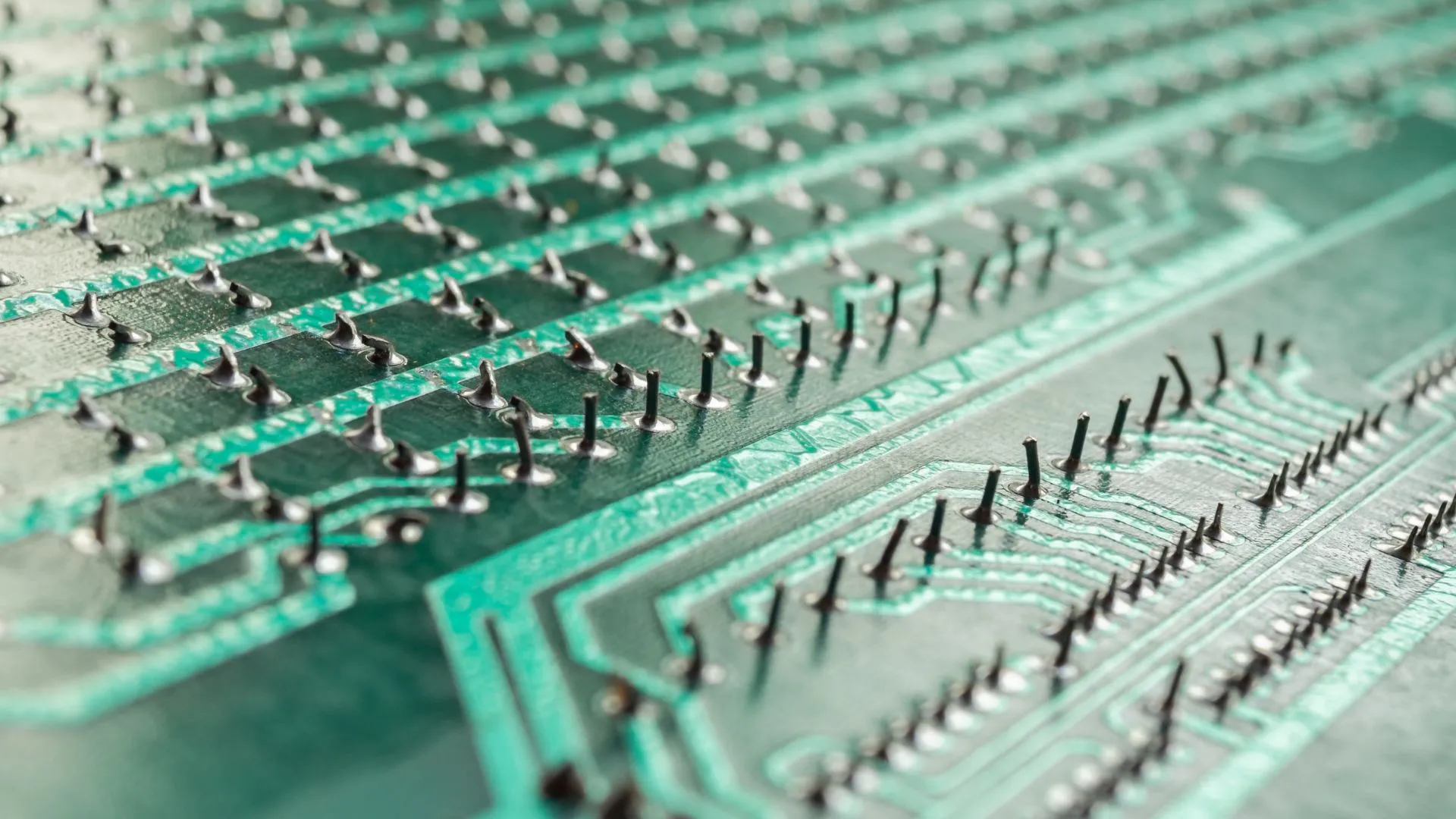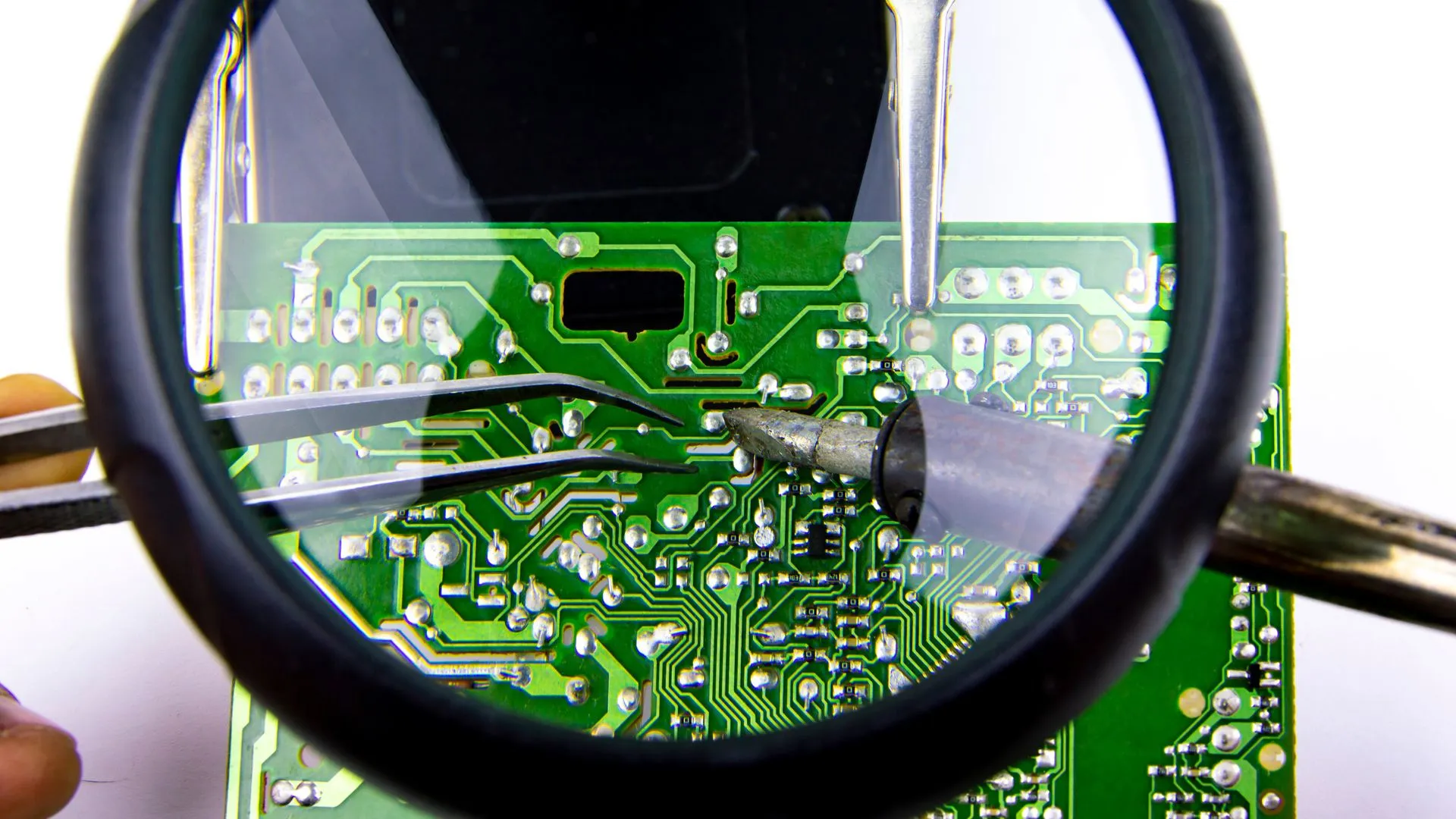Lödningsproblem
Identifiera och eliminera känsliga områden där det inte finns tillräckligt med lödning, lödstänk, lödshorts eller icke-robusta lödfogar för SMT- och PTH-process

Indic bekämpar proaktivt lödbarhetsproblem i SMT- och PTH-processer. Vår DFM-granskning identifierar potentiella problem tidigt. Detta inkluderar analys av faktorer som dynstorlek och form, komponentplacering och termiska profiler. Vi använder högkvalitativa material, avancerad utrustning och noggrann inspektion under hela processen. Genom att ständigt förbättra minimerar vi defekter, förbättrar produktkvaliteten och säkerställer produktionseffektivitet. Välj Indic för pålitliga lödlösningar och sinnesfrid.

På Indic utmärker vi oss i att identifiera och eliminera potentiella lödbarhetsproblem inom Surface Mount Technology (SMT) och Plated Through-Hole (PTH) processer. Vårt proaktiva tillvägagångssätt börjar med en grundlig granskning av Design for Manufacturability (DFM), där vi analyserar faktorer som dynstorlek och form, komponentplacering och termiska profiler för att mildra eventuella förutsebara problem tidigt. Vi prioriterar kvalitet i varje steg, använder högkvalitativa material, toppmodern utrustning och stränga inspektionsprocesser under hela lödprocessen. Med våra kontinuerliga förbättringsinsatser minimerar vi defekter, förbättrar produktkvaliteten och säkerställer produktionseffektivitet, vilket ger dig sinnesfrid.

- SMT-lödning
- Våglödning
- Automatisk lödning
- Selektiv lödning
- Manuell lödning
- Röntgeninspektion
- 100X Omfattningsinspektion till defektvalidering
Soldering defects are imperfections in solder joints that can lead to failures in electrical circuits. They include cold solder joints, solder bridges, insufficient or excessive solder, tombstoning, and voids.
Avoid common PCB soldering problems by ensuring proper PCB and component storage to prevent oxidation, using suitable flux and solder, maintaining optimal soldering temperatures, and employing adequate preheating and cleaning processes.
Solderability refers to the ability of a material, typically a metal, to be soldered effectively, allowing for proper wetting and adhesion of the solder to the material's surface.
Common soldering problems include cold joints, overheated components, solder bridges (shorts), insufficient wetting, and excessive flux residue. These issues can compromise electrical connections and the reliability of the PCB.
A PCB solderability test evaluates a board's ability to be soldered to, ensuring that the solder properly wets and adheres to the component leads and pads. This test is crucial for assessing the quality of PCB materials and surface finishes.
Major soldering defects include cold joints, dry joints, solder bridges, tombstoning, solder balls, and voids, each affecting the functionality and reliability of the PCB.
Cold/Dry Joints: Reheat the joint with proper solder and flux. Solder Bridges: Remove excess solder with desoldering braid. Solder Balls: Clean the area and reapply solder with correct temperature. Tombstoning: Adjust component placement and reflow solder. Voids: Apply additional flux and reheat to allow solder to fill gaps.
To avoid bad solder joints, ensure clean and well-prepared surfaces, use the correct solder and flux, apply appropriate heat, and adhere to optimal soldering times. Proper technique and equipment maintenance are also crucial.
The issue with solder wetting occurs when the solder fails to spread on the metal surface being soldered, leading to weak or unreliable joints. Poor wetting can result from oxidation, contamination, or inadequate flux.







